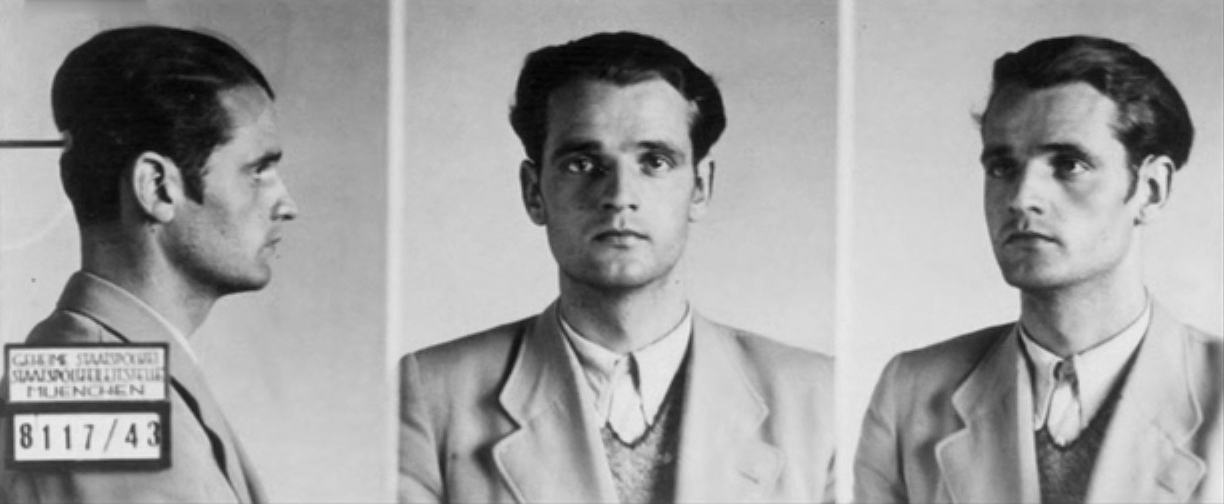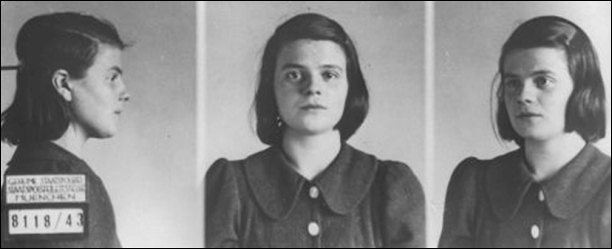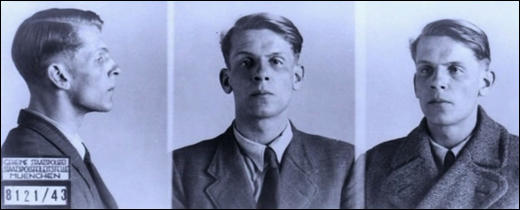
Leaflet Production
"We learned in the spring of 1942 of the arrest and execution of 10 or 12 Communists. And my brother said, In the name of civic and Christian courage something must be done. Sophie knew the risks. Fritz Hartnagel told me about a conversation in May 1942. Sophie asked him for a thousand marks but didn’t want to tell him why. He warned her that resistance could cost both her head and her neck. She told him, I’m aware of that. Sophie wanted the money to buy a printing press to publish the anti-Nazi leaflets.”
~ Elisabeth Scholl
"We learned in the spring of 1942 of the arrest and execution of 10 or 12 Communists. And my brother said, In the name of civic and Christian courage something must be done. Sophie knew the risks. Fritz Hartnagel told me about a conversation in May 1942. Sophie asked him for a thousand marks but didn’t want to tell him why. He warned her that resistance could cost both her head and her neck. She told him, I’m aware of that. Sophie wanted the money to buy a printing press to publish the anti-Nazi leaflets.”
~ Elisabeth Scholl
As the group realized the need to speak out, they knew the importance of doing so in a peaceful way. They had no intentions of harm, so they decided the best way to bring change was to spread leaflets conveying their beliefs.
I
Leaflet 1 written by Scholl & Schmorell in June 1942
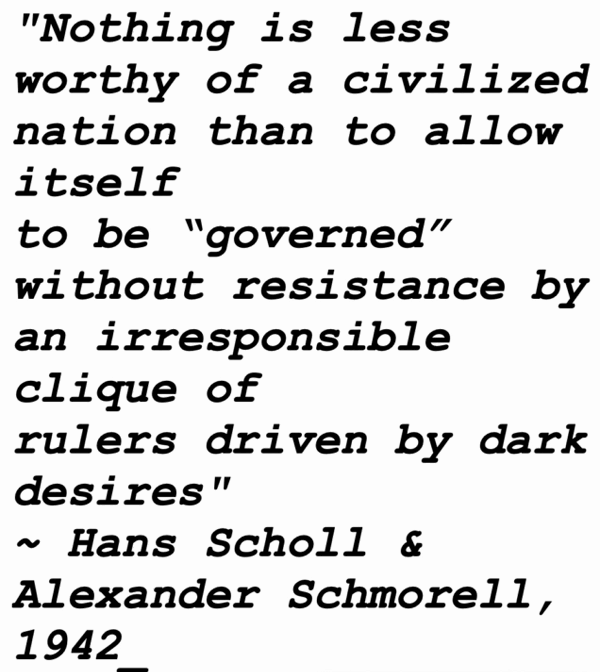
With the first leaflet published, The White Rose became the first Germans who managed to successfully speak out against Hitler's regime. They targeted their message at the German people, and didn't hesitate to emphasize their disapproval of the Nazi government.
II
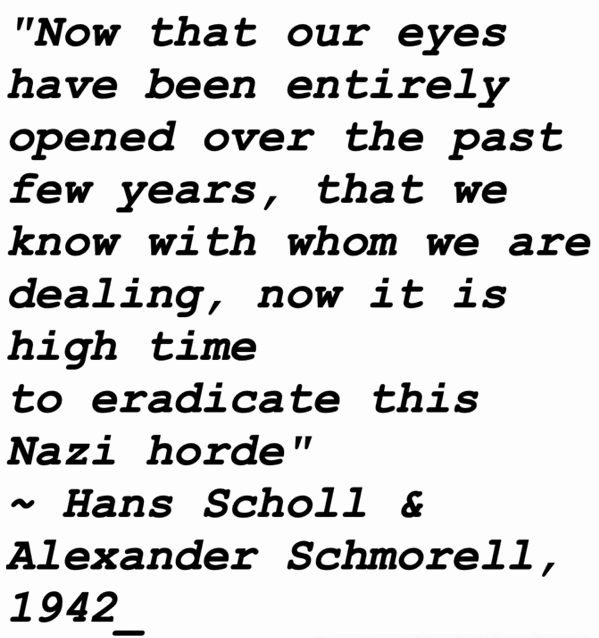
Leaflet 2 written by Scholl & Schmorell in June 1942
The second leaflet highlighted the poor treatment of Jews and questioned the German population, wondering why they allowed such treatment to go unpunished.
III
Leaflet 3 written by Scholl & Schmorell in July 1942
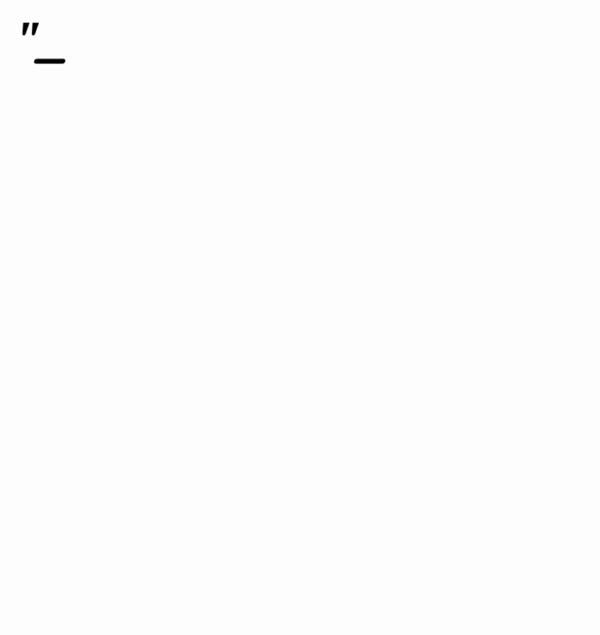
The third leaflet explicitly shared the goal of the White Rose: to bring down the Nazi Government. They maintained the idea of passive resistance while striving for this goal.
IV
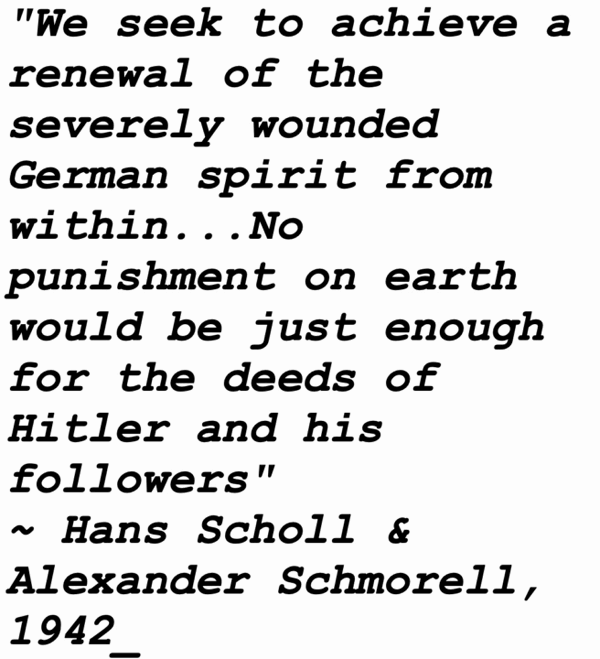
Leaflet 4 written by Scholl & Schmorell in July 1942
The fourth leaflet detailed the amount of Germans killed in battle. They wanted to restore the German spirit and unite to bring down Hitler.
V
Leaflet 5, written by Huber in January 1943
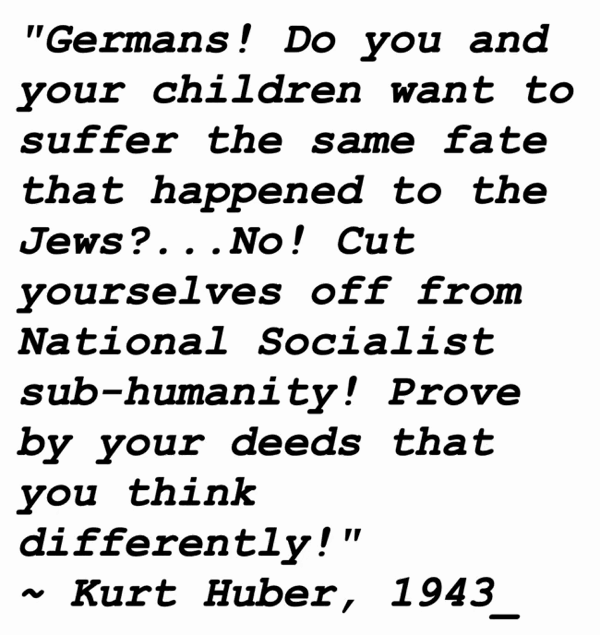
The fifth leaflet was the first that was not signed "The White Rose", rather "the "Resistance Movement in Germany". This leaflet was written to share with other Germans the kind of world the White Rose hoped for after war.
VI
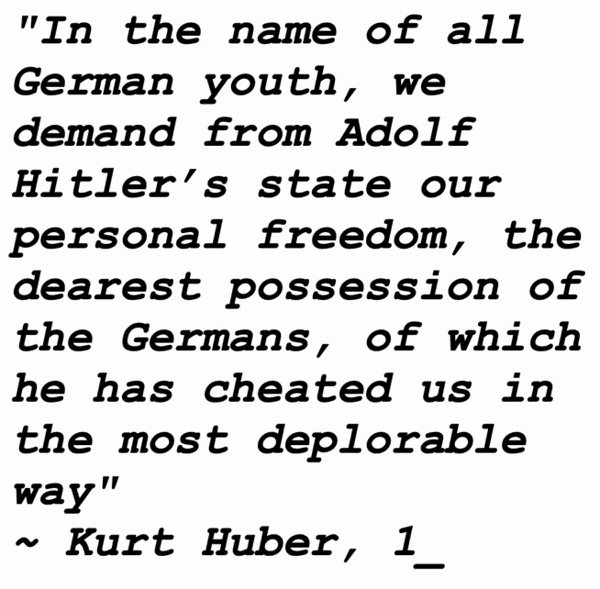
Leaflet 6, written by Huber in February 1943
The sixth and final leaflet is specifically directed at students. They intended to connect with the younger generations to build a strong population that would combat Hitler.
(All leaflets and translations courtesy of The German Resistance Memorial Center)
In addition to their leaflets, the group also produced stencils reading phrases such as, “Freedom”, “Down with Hitler”, and “Mass murderer Hitler”. With these stencils, they graffitied public places, in an attempt to address even larger portions of the German population.
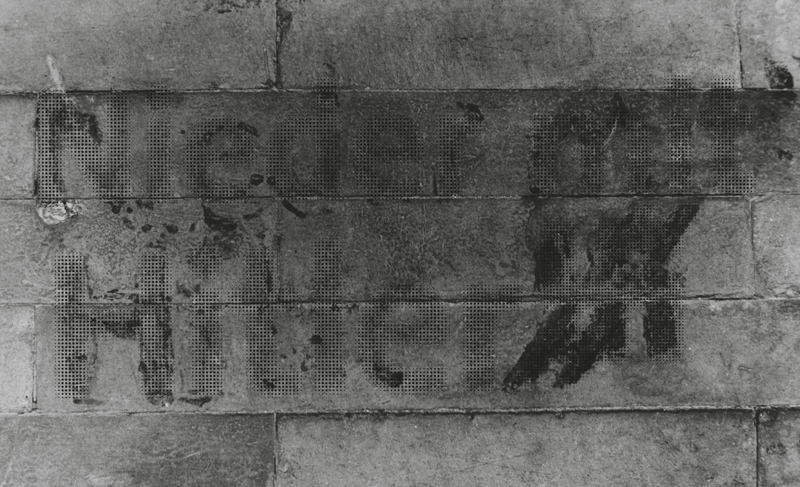
Wall inscription reading "Down With Hitler"
(White Rose Foundation)
The group was able to write and produce six leaflets before Jakob Schmid, a Nazi Party member and janitor for the University of Munich, caught the Scholl siblings throwing leaflets from the second floor and reported them to the Gestapo.
Broken Diplomacy
"A small group of Munich students were the only protesters who managed to break out of the vicious circle of tactical considerations and other inhibitions. They spoke out vehemently, not only against the regime but also against the moral indolence and numbness of the German people."
~ Joachim Fest
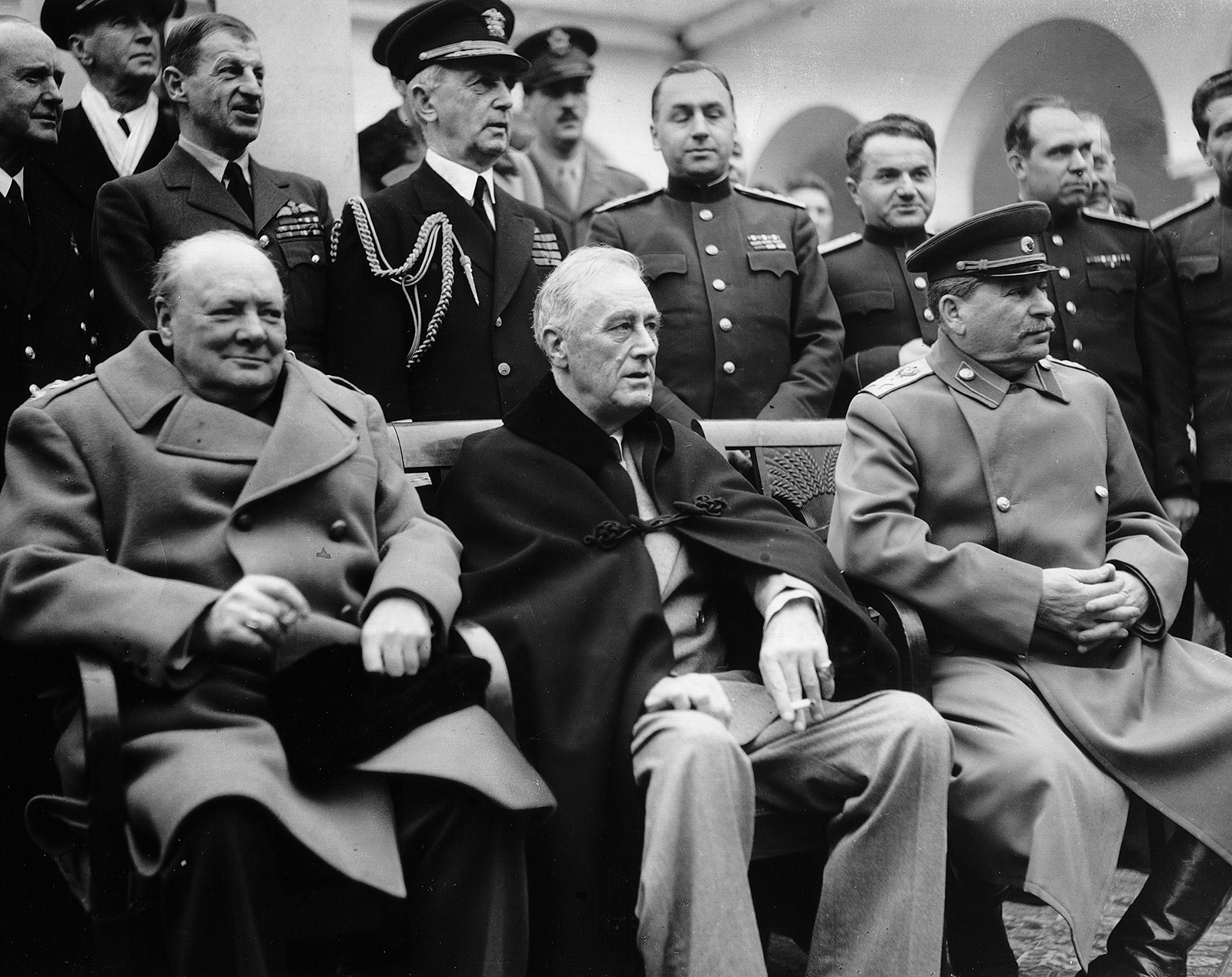
Allied Powers in WWII
(Britannica.com)
Adolf Hitler was a violent nationalist leader with one goal: consolidating his power. He sought to eliminate anyone who threatened his power, causing WWII to be one of the bloodiest conflicts in history. Several world powers—France, Great Britain, and Italy—knew of Hitler's dangerous ideas, but none took action against him. At the Munich Conference in 1938, these countries agreed upon a policy of appeasement, allowing the German annexation of Czechoslovakia's Sudetenland as long as Hitler pledged peace. Hitler agreed, though he had no intention of stopping his conquest. This lack of diplomatic intervention from Western powers led to the ultimate call to action from a group of University students.
Arrest & Execution of the White Rose
"They arrived at the university, and since the lecture rooms were to open in a few minutes, they quickly decided to deposit the leaflets in the corridors. Then they disposed of the remainder by letting the sheets fall from the top level of the staircase down into the entrance hall. Relieved, they were about to go, but a pair of eyes had spotted them...The doors of the building were immediately locked, and the fate of brother and sister was sealed."
~ Inge Scholl
When the Scholl siblings were spotted, they were immediately arrested and searched. The Gestapo found a draft of the sixth leaflet signed by Christoph Probst, who was later arrested.
Judge Roland Freisler
In 1933, Freisler was appointed chief personnel officer in the Prussian Ministry of Justice. Later, in 1942, he was appointed President of the People's Court. Freisler was the judge during the students' trial, and told the court, "The accused have by means of leaflets in a time of war called for the sabotage of the war effort and armaments and for the overthrow of the National Socialist way of life of our people, have propagated defeatist ideas, and have most vulgarly defamed the Führer, thereby giving aid to the enemy of the Reich and weakening the armed security of the nation. On this account they are to be punished by death. Their honour and rights as citizens are forfeited for all time."
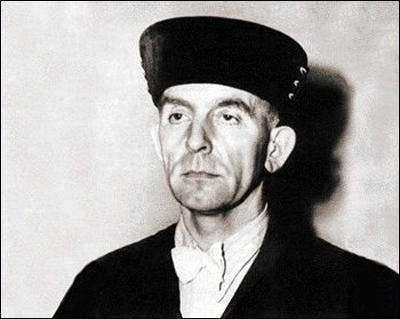
Roland Freisler
(Spartacus Educational)
(All Gestapo Photos courtesy of Spartacus Educational)
"Stay strong, no compromises"
~ Hans Scholl, 1943, his last words to his siblings
With three White Rose members in custody, the investigation continued to find the others associated. Their trial began almost immediately, and the trio was sentenced to death by guillotine–first Hans, then Sophie, and finally Christoph. Both attorneys for the students were appointed to defend them;so, although they asked for a lesser punishment, they didn't fight back when the students received their sentence. When the remaining founding members were located, they were each arrested and ultimately sentenced to death.
"They bore themselves with marvelous bravery. The whole prison was impressed by them. That is why we risked bringing the three of them together once more-at the last moment before the execution. If our action had become known, the consequences for us would have been serious. We wanted to let them have a cigarette together before the end. It was just a few minutes that they had, but I believe that it meant a great deal to them."
~ Stadelheim Prison Guard, 1943

Wall inscription reading "Down With Hitler"
(White Rose Foundation)
In addition to their leaflets, the group also produced stencils reading phrases such as, “Freedom”, “Down with Hitler”, and “Mass murderer Hitler”. With these stencils, they graffitied public places, in an attempt to address even larger portions of the German population.
The group wrote and produced six leaflets before Jakob Schmid, a Nazi Party member and janitor for the University of Munich, caught the Scholl siblings throwing leaflets from the second floor and reported them to the Gestapo.
